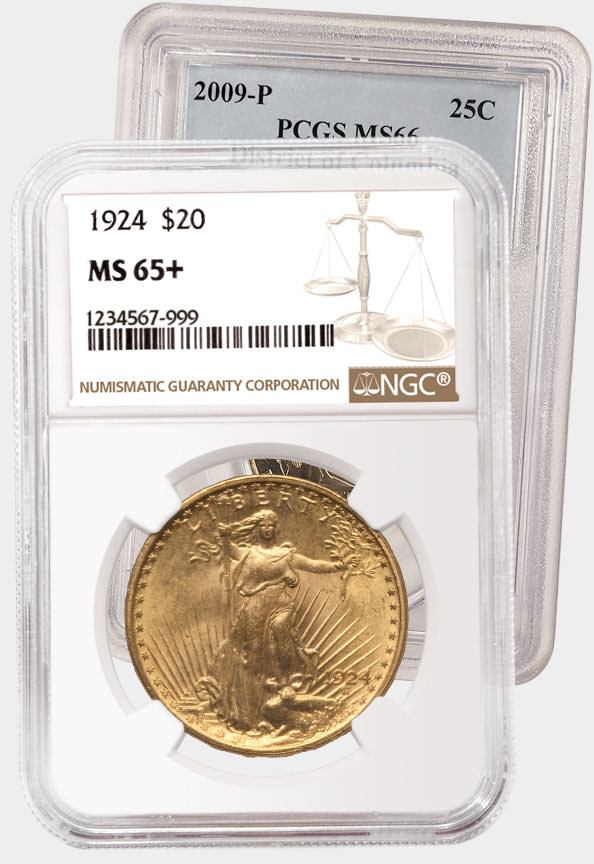USA Coin Album: Five for a Dollar - The Ill-fated 20-cent Piece, Part One
Posted on 7/11/2017


These had been based on divisions of six, or eight, twelve, etc., rather than the mathematically simpler division of the dollar into 100 cents. In our new coinage, the quarter dollar of 25 cents really had no place, but it was adopted because the Spanish colonial two-reales piece was then so prevalent in American commerce. Two reales equaled one quarter of the Spanish milled dollar, a coin in widespread use, and so it continued to circulate in America as one quarter of the new United States dollar. It would have made more sense intellectually to issue a 20-cent piece, but such a coin would have been less well accepted by Americans who'd been using the familiar "two bits" for generations.
An attempt to add a 20-cent piece to the United States roster of coins was made in 1806. The coining of quarter dollars in meaningful numbers had begun only the year before, as there had been enough of the Spanish coins to meet demand for quarter dollars. Senator Uriah Tracy of Connecticut introduced a bill in March calling for the production of two-cent pieces and 20-cent pieces. The smaller coin was to be of billon, which is debased silver, and the controversy over this seems to have doomed his legislation without much discussion of the 20-cent piece at all.
Another attempt to adopt the 20-cent piece came in 1850, when Congress was debating what to do about the Spanish silver still circulating in the United States. The independence movements that cost Spain most of its colonies after 1810 had disrupted coinage of the widely used eight-reales piece and its fractions, and the coins which remained in American circulation were often badly worn and/or mutilated. Though by mid century the U. S. Mints were turning out enough domestic coinage that the foreign pieces were no longer needed, to terminate their legal tender status altogether would cause great loss to holders of these coins.
A compromise was proposed in which the coins would be redeemed by the Treasury at a value which reflected their depreciated state. For example, the two-reales piece would be purchased by the Treasury at the rate of 20 cents, and the bullion thus obtained would be recoined into domestic pieces. This plan would be facilitated by the introduction of a United States 20-cent piece. As this subject was being debated, however, great discoveries of gold in California and Australia caused the price of that metal to decline in relation to silver. This shift drove United States silver coins from domestic circulation, with only the debased three-cent piece continuing to pass at face value. Such a crisis put all other plans on hold, as Congress dithered over what to do about restoring fractional silver coins to circulation, and the 20-cent piece was again forgotten.


The relative values of silver and gold likewise played a strong role in finally getting this denomination into production in 1875. One by-product of so much California gold was the considerable amount of silver extracted from its ore. Before 1848, little silver had been found within the United States, and the Nevada's Comstock Lode discovery of 1859 became the first large domestic source. Further silver bonanzas occurred in the western states and territories throughout the 1860s-70s, and this increased the supply of silver to the point where several European nations terminated their bimetallic standards in favor of a single gold standard. The United States had effectively done this with the silver coin weight reductions of 1853 and the discontinuance of standard silver dollar coinage in 1873. The combined effect of all these developments was a steady decline in the price of silver as measured in gold, this being particularly evident during the 1870s. The sweeping legislation enacted February 12, 1873 later would be denounced by western silver mine owners and their members of Congress as "The Crime of '73," despite the fact that it received little protest at the time of its passage.
As the price of silver continued to fall, one positive note was that fractional silver coins (half dimes through half dollars) returned to domestic commerce starting in mid-decade after years of foreign circulation. Millions of new pieces were being coined at the same time, and yet silver continued its slide. The Mint Act of 1873 had authorized a trade dollar coined at a higher silver weight than the standard dollar had been, but both this action and the stepped up production of dimes, quarters and halves were not enough to pacify the silver interests and their representatives. Still further uses of the metal to soak up the oversupply were sought, and this campaign ultimately resulted in passage of the Bland-Allison Act in 1878, which coined hundreds of millions of unneeded silver dollars (see this column for October, 2016).
It was amid this atmosphere of urgency that the 20-cent piece, hitherto a bridesmaid but never a bride, was finally added to the U. S. Mint's lineup in 1875. Next month, I'll examine this coin's hasty development and brief lifespan.
David W. Lange's column, “USA Coin Album,” appears monthly in The Numismatist, the official publication of the American Numismatic Association.
Stay Informed
Want news like this delivered to your inbox once a month? Subscribe to the free NGC eNewsletter today!
